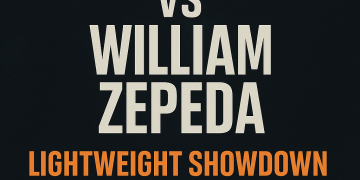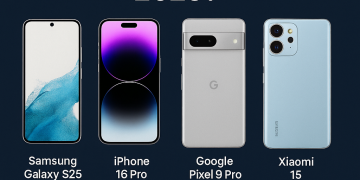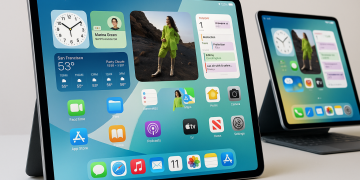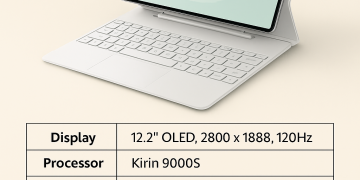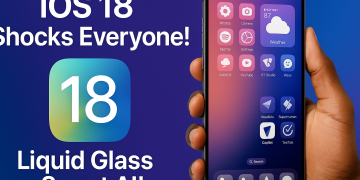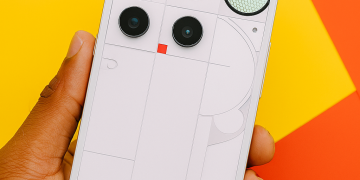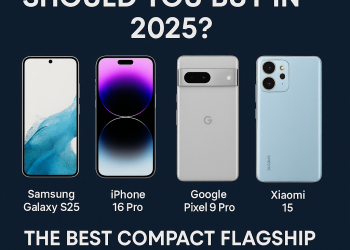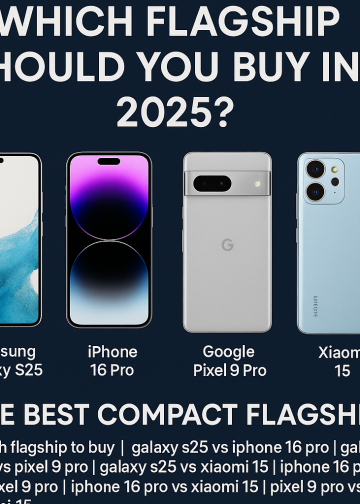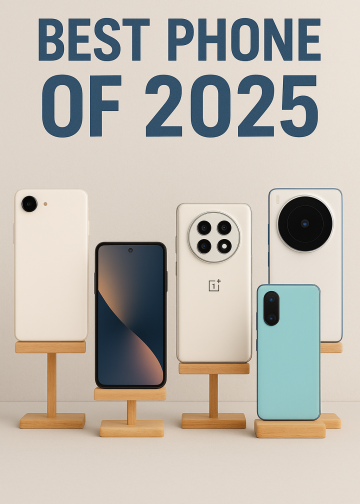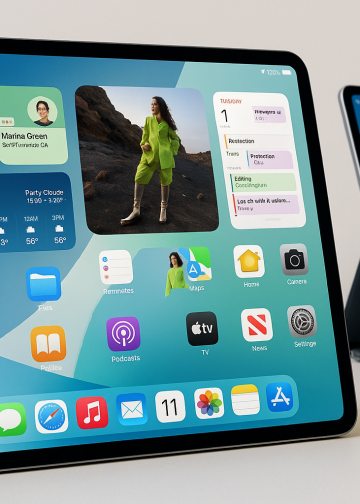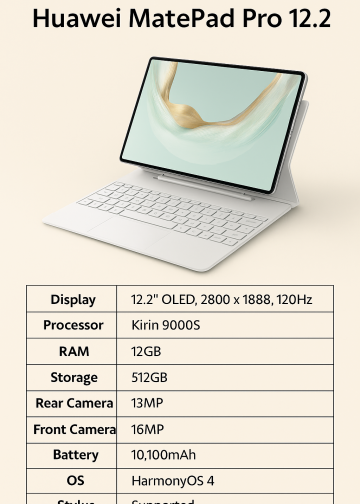Meta Description: Explore the new Galaxy Z Fold 7’s thinner design, flagship camera, and multitasking upgrades. Is this Samsung’s best foldable yet?
Introduction
The foldable phone revolution has entered a new phase, and leading the charge is Samsung’s Galaxy Z Fold 7. This latest iteration promises a leaner, lighter, and smarter device designed to finally make foldables feel like everyday phones. With each new generation, Samsung inches closer to the perfect blend of portability and power, and the Fold 7 appears to be a major leap forward. Whether you’re an early adopter of foldables or someone who’s waited patiently for the technology to mature, the Fold 7 commands attention. From its redesigned chassis and reduced thickness to the inclusion of flagship-level hardware and improved software multitasking, this phone isn’t just an evolution—it’s a potential benchmark. In this review, we’ll break down what makes the Galaxy Z Fold 7 so exciting, analyze its strengths and limitations, and determine whether this futuristic device is finally ready to take the spotlight in mainstream mobile tech.
Design and Build Quality
Samsung has clearly made the design of the Galaxy Z Fold 7 a top priority. The device is thinner and lighter than ever, coming in at just 8.9 mm when folded—remarkably sleek for a foldable phone. Each side of the phone, when unfolded, measures slightly over 4 mm, giving it a profile that feels much closer to a standard smartphone. At 215 grams, it’s even lighter than Samsung’s own Galaxy S25 Ultra. This kind of weight reduction is the result of a meticulous overhaul of internal components, including the hinge and frame, which have been streamlined without sacrificing durability. The redesigned chassis feels premium in hand, with a polished finish and tight tolerances that reflect top-tier craftsmanship. The fingerprint reader and physical buttons have been slimmed down to align with the thinner rails, maintaining function without adding bulk. Samsung’s attention to usability is evident, as the Fold 7 is significantly more comfortable to use when closed than its predecessor. It straddles the line between futuristic and familiar, making it feel less like a prototype and more like a polished flagship ready for the spotlight.
Display and Viewing Experience
The Galaxy Z Fold 7 continues Samsung’s tradition of offering stunning displays, and this year’s model brings notable enhancements on both the folded and unfolded fronts. The outer display is more usable than ever, featuring an edge-to-edge design with vibrant colors and excellent brightness levels—ideal for quickly checking messages or handling tasks without unfolding the device. When unfolded, the phone reveals a massive 8-inch AMOLED display that delivers an immersive experience for productivity and media consumption alike. With ultra-thin bezels and a high refresh rate, scrolling feels fluid, and videos look crisp and vivid. The screen’s improved durability is thanks to advancements in ultra-thin glass technology, making it more resistant to scratches and pressure without adding noticeable thickness. Whether you’re flipping through documents, editing photos, or enjoying your favorite streaming service, the Fold 7 offers a large, portable canvas that’s unrivaled in the foldable space. Samsung’s commitment to refining the display experience is evident, and the result is a foldable screen that feels less like a novelty and more like a practical, everyday interface for modern digital life.
Performance and Specifications
Under the hood, the Galaxy Z Fold 7 is equipped with the Snapdragon 8 Gen 3 for Galaxy—a custom-tuned chipset offering flagship-grade performance. Paired with 12GB of RAM in the base model (and up to 16GB in the 1TB variant), this phone is clearly designed for heavy multitasking and high-intensity applications. Whether you’re juggling multiple apps, engaging in mobile gaming, or editing high-resolution photos, the Fold 7 delivers smooth, consistent performance. One of the standout aspects is the improved thermals, thanks to better internal heat dissipation design. Even under load, the phone remains comfortably cool, which is vital for prolonged productivity sessions. Samsung has also integrated robust AI enhancements through Galaxy AI, improving features like voice transcription, real-time translation, and advanced photo editing tools with background object removal. Storage options now scale up to 1TB, giving professionals and creators ample room for large files, while UFS 4.0 ensures ultra-fast read/write speeds. Gaming performance is equally impressive, with high frame rates and responsive controls across even the most demanding mobile titles. All in all, the Fold 7 isn’t just about the form—it’s packed with substance and power to back it up, making it a true flagship by any standard.
Camera Review
The Galaxy Z Fold 7 makes a bold statement with its camera setup, particularly by incorporating the same 200MP primary sensor found in the Galaxy S25 Ultra. This inclusion significantly narrows the gap between foldables and traditional flagship phones when it comes to photography. Photos taken with the main sensor showcase excellent sharpness, dynamic range, and low-light capabilities, making it one of the most capable cameras ever placed in a foldable. The ultrawide 12MP lens and 10MP 3x telephoto remain slightly below flagship tier, but still deliver respectable results. Most users will find the main sensor meets or exceeds their daily needs for photo and video capture. The selfie camera located inside the display also received a bump—a wider-angle 10MP sensor that’s ideal for video calls or casual snaps. What’s even more interesting is how Samsung managed to fit such high-end optics into a slimmer body without sacrificing quality. The only notable issue is the phone’s tendency to rock on flat surfaces due to the large camera bump, which may bother users who prefer using the device without a case. Nevertheless, in the world of foldables, the Fold 7 sets a new benchmark for mobile photography excellence.
Battery and Charging
Battery life is often a concern with foldable phones, but Samsung has managed to strike a respectable balance with the Galaxy Z Fold 7. The device retains a 4,400 mAh battery—identical to last year’s model—despite becoming thinner and lighter. While not groundbreaking in capacity, the combination of an efficient Snapdragon 8 Gen 3 chip and software optimizations help extend battery life to a full day of moderate to heavy use. Power users who frequently utilize the large internal display may need a top-up by evening, but that’s expected given the expansive screen real estate. Fast charging is supported via USB-C, and while it doesn’t reach the blazing speeds of some competitors, it delivers a solid 50% charge in under 30 minutes. Wireless charging and reverse wireless charging are also available for added convenience. One missed opportunity, however, is Samsung’s continued reluctance to explore silicon-carbon battery technology—an area where some rivals like Honor are pushing ahead. Still, the Fold 7’s battery system is reliable and safe, offering just enough endurance to make the foldable experience practical for most users.
Software and User Interface
Out of the box, the Galaxy Z Fold 7 runs One UI 8 based on Android 16, bringing a host of features designed specifically for big-screen multitasking. Samsung has refined its multitasking interface to allow seamless switching between apps, better split-screen controls, and improved drag-and-drop interactions. App continuity works flawlessly, with apps transitioning smoothly between the outer and inner screens without a hiccup. Flex Mode continues to shine, especially for content creation and video calls, allowing the phone to sit half-open like a mini laptop. Samsung’s Galaxy AI features are deeply embedded here as well—users benefit from intelligent suggestions, live translation, and contextual assistance across supported apps. Security and privacy features are top-tier, with Samsung Knox integration and frequent software updates promised for years. The software not only enhances the hardware’s capabilities but makes using a foldable feel intuitive and future-ready. In short, the Fold 7’s software elevates the device from a technical marvel to a truly versatile productivity companion.
Drawbacks and Limitations
Despite its many strengths, the Galaxy Z Fold 7 isn’t without compromise. The most obvious is the removal of S Pen support—a surprising step back from the Fold 6, which had embraced stylus functionality. This change will disappoint note-takers and digital artists who appreciated the added precision. The phone’s price also continues to climb, with a $1,999 starting point placing it well above many traditional flagships. Battery capacity remains unchanged from last year, and while efficient, it still lags behind newer silicon-carbon implementations from competitors. Additionally, the large camera bump causes the phone to wobble on flat surfaces, which may annoy users who prefer to go caseless. These issues don’t derail the experience, but they’re worth considering if you’re expecting a flawless next-gen foldable.
Comparison and Final Verdict
Compared to other foldables on the market—including competitors like the Honor Magic V series—the Galaxy Z Fold 7 holds its ground admirably. While Honor may lead in battery tech, Samsung’s superior display, software experience, and camera package make it a more balanced offering overall. If you’re choosing between the Fold 7 and Flip 7, the Fold wins in productivity and screen size, while the Flip offers portability and value. Ultimately, the Fold 7 feels like Samsung’s most complete foldable yet, offering substantial improvements without reinventing the wheel. It’s an exciting step forward for foldables—one that makes this futuristic form factor more compelling than ever.
Final Thoughts
Ready to embrace the foldable future? Share your thoughts and let us know if the Fold 7 won you over.

















